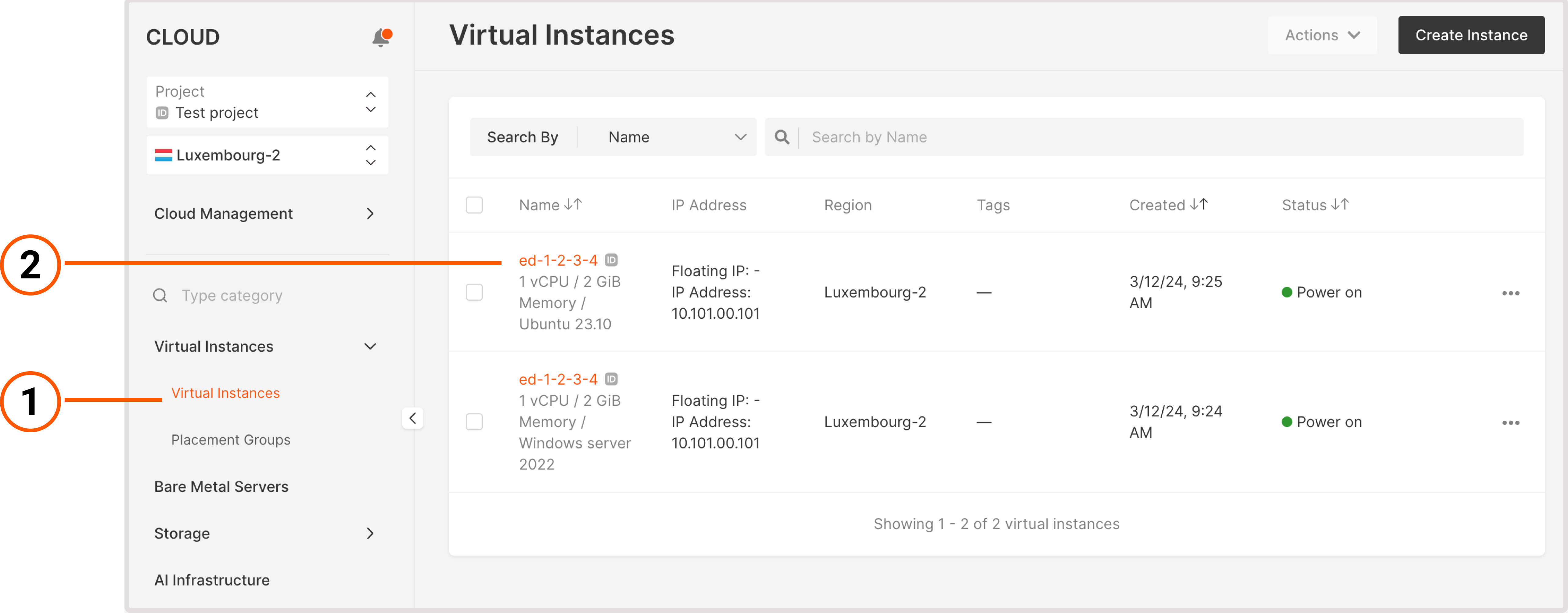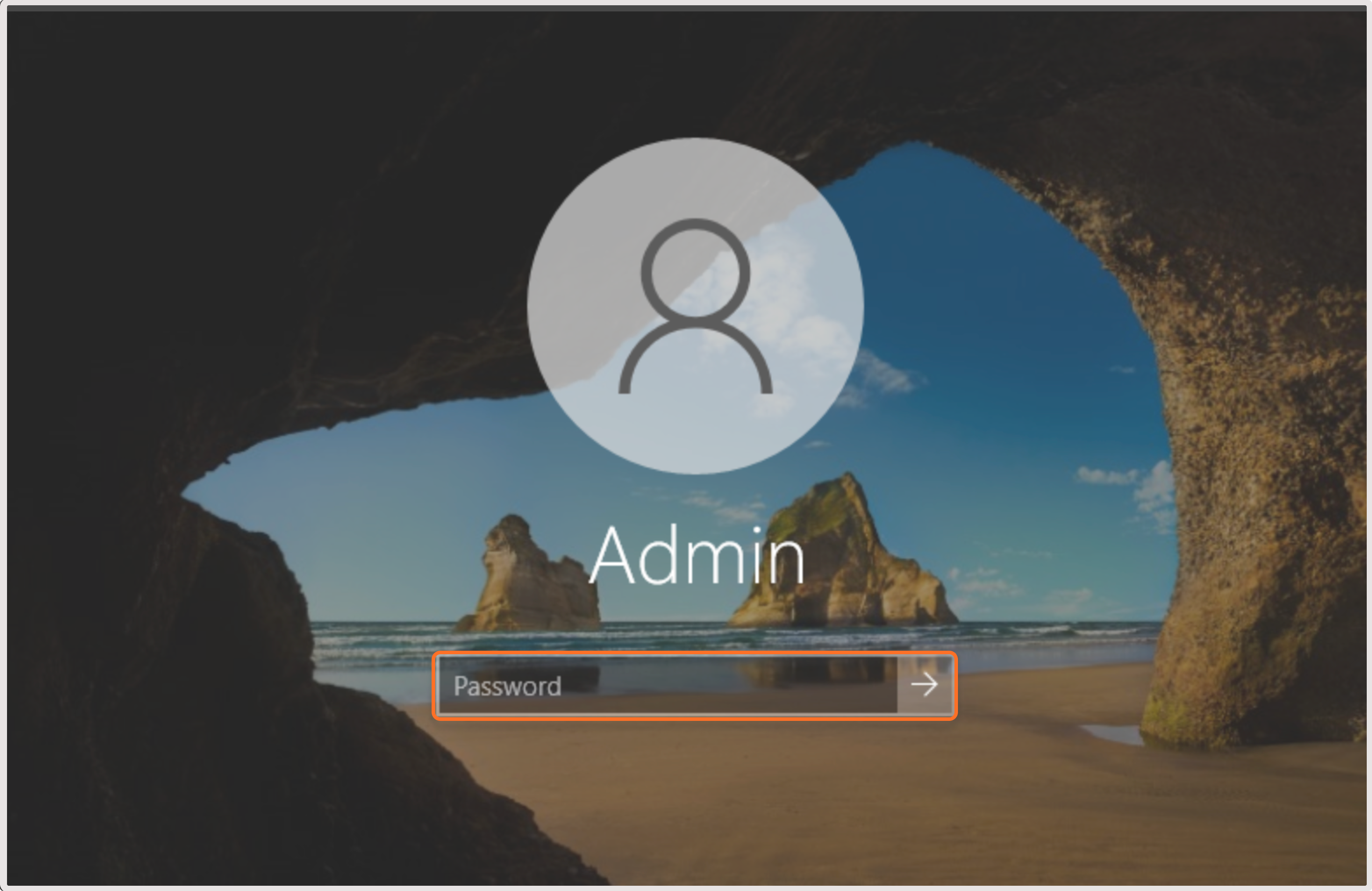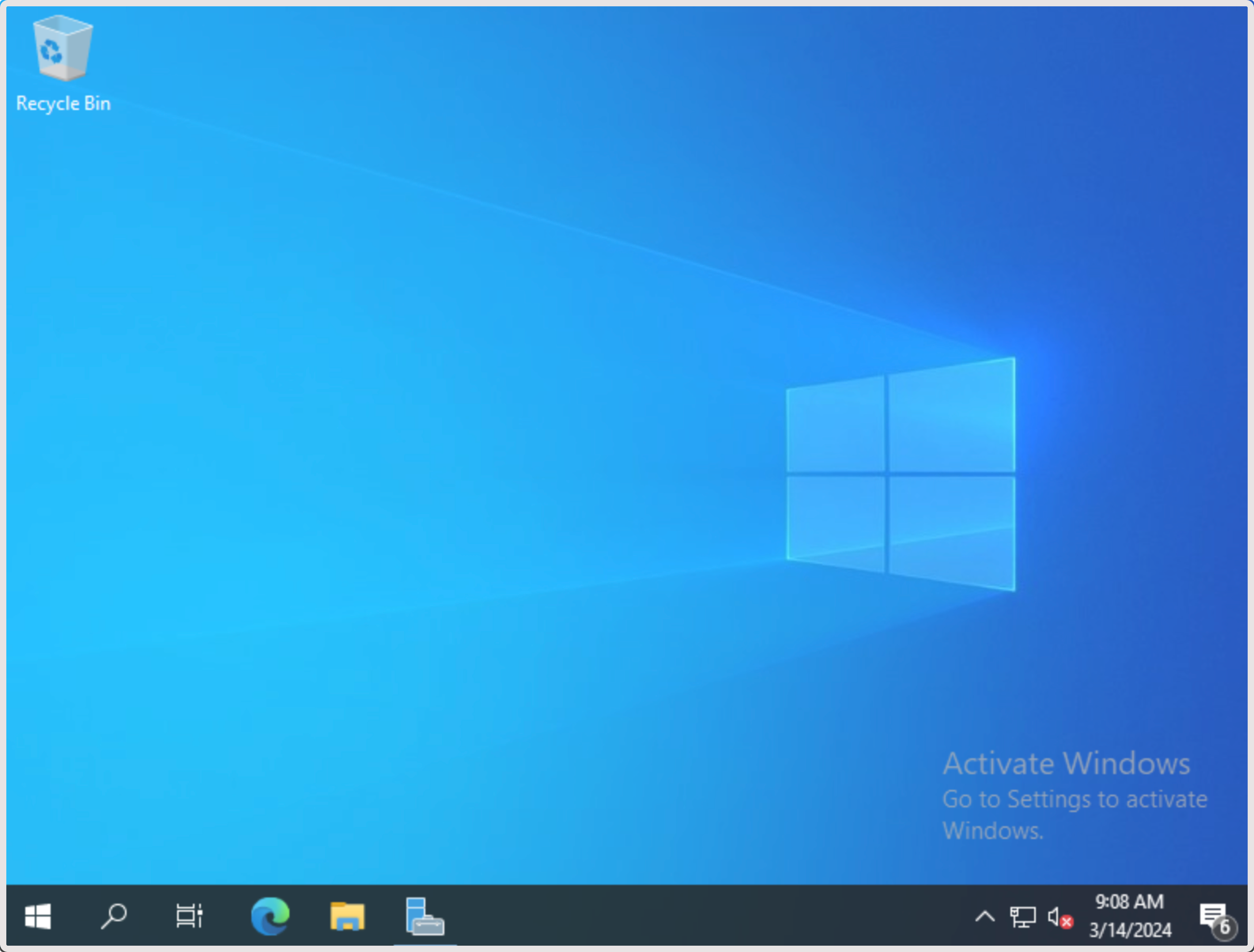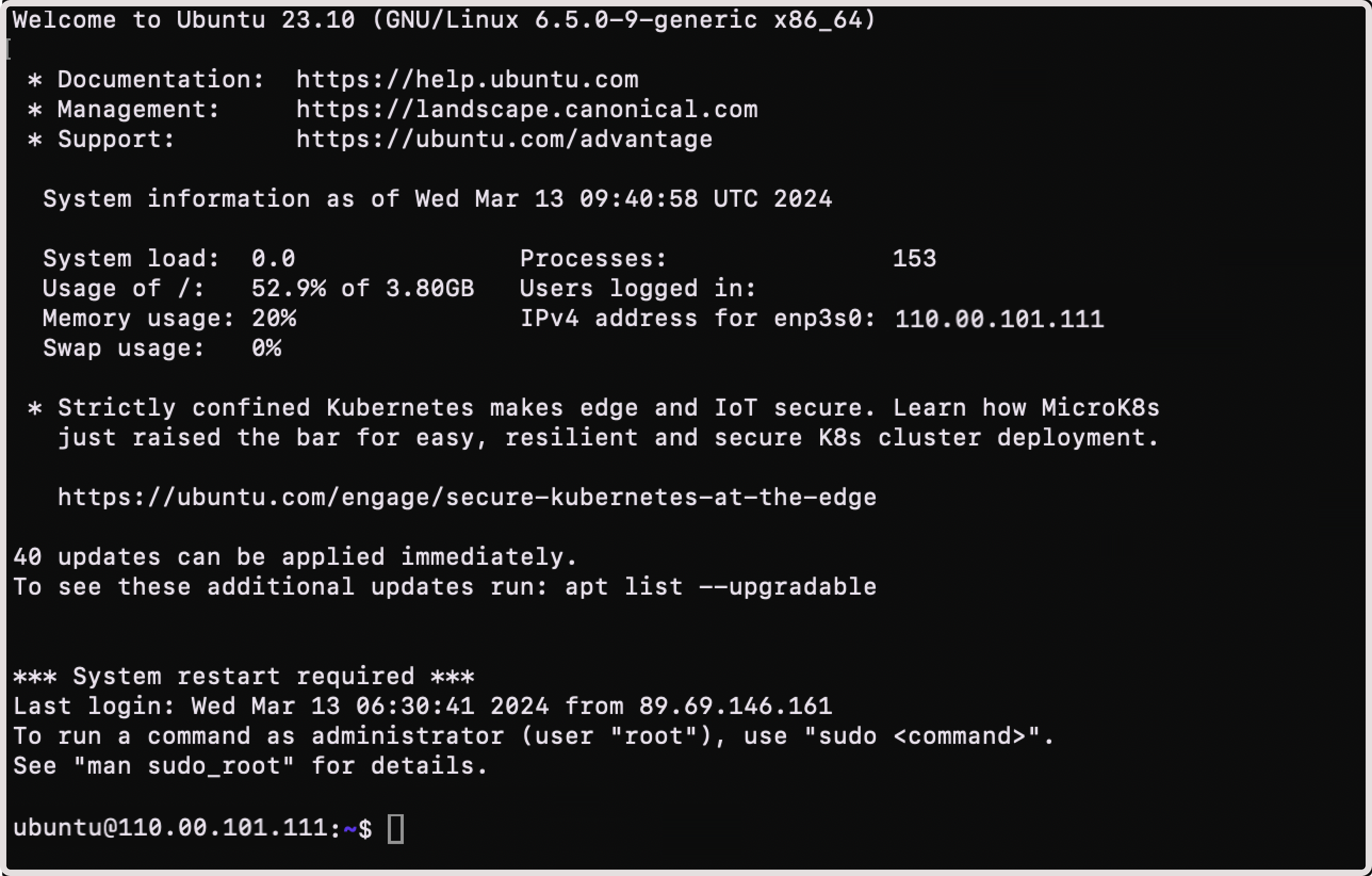- Connect to a Windows Virtual Machine
- Connect to a Linux Virtual Machine
InfoOn Virtual Machines with Windows OS, you can’t use the password parameter both in the Access and “User data” fields. Since the Access field is required, configuring user data on a Windows VM is not possible. Read more about the permitted VM parameters in our API docs.






